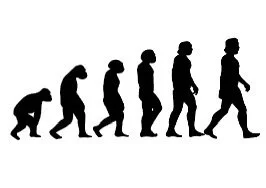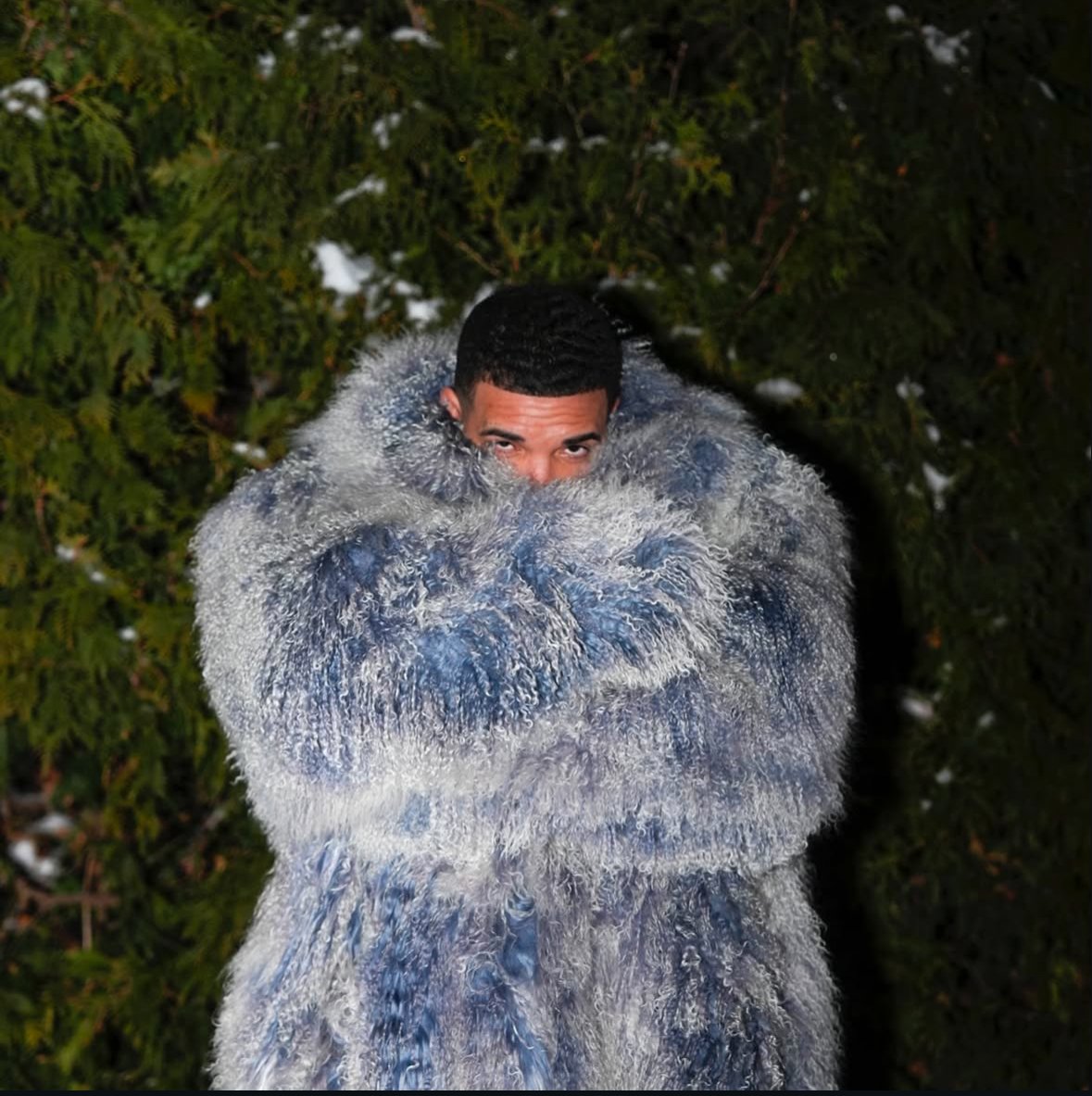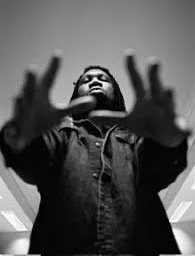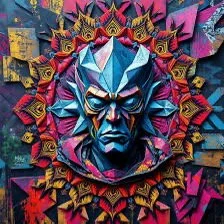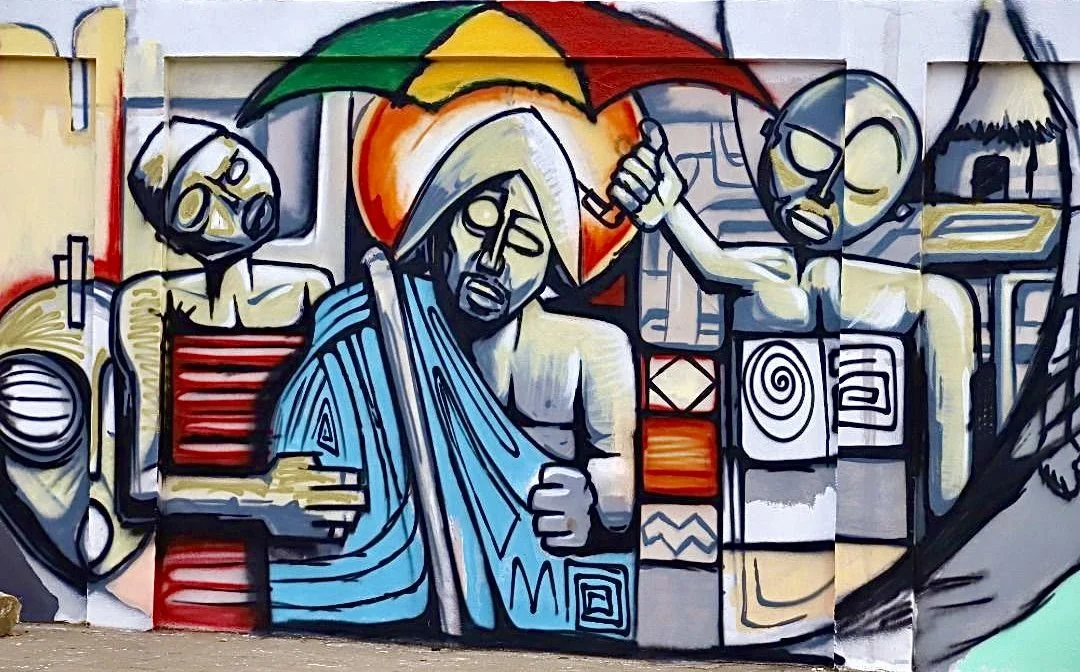Emergence, Evolution, and Hiphop: Understanding Growth Beyond the Surface
Excerpt from the Forthcoming Text: Integral Hiphop: Consciousness, Culture, Craft, and Community
By Justin F. Miles, LCPC-S, LGADC-S, Founder, Hiphop Alive
Introduction: The Importance of Differentiation
In a 2017 interview with Vogue, Kendrick Lamar described certain new styles of rap—mumble and drill, for instance—as evidence of Hiphop’s “evolution.” For many listeners, including myself, this statement was both intriguing and puzzling. It was intriguing because it suggested the culture was growing in ways we might not fully understand yet; it was puzzling because many of these emergent artists seemed to lack the depth and lyrical skill that typically marks genuine progress in the art form. On closer examination, it became clear that Kendrick was celebrating the newness of these styles. However, newness alone does not necessarily equate to maturity, depth, or positive cultural impact.
Hiphop, like all cultural movements, is in a constant state of flux. Since its inception, each new wave of music, dance, or visual art has stirred excitement while fueling heated debates over authenticity and progress. This tension between “what’s next” and “what’s real” is part of Hiphop’s creative DNA. Yet, in this rush to embrace or dismiss new subgenres, many of us conflate mere emergence—the appearance of something novel—with evolution, which implies growth that refines and transcends what came before.
This confusion undermines our ability to appreciate the energy of innovation without losing sight of Hiphop’s foundational values of knowledge, community, and self-awareness.
Emergence vs. Evolution: Core Definitions
When we talk about “emergence,” we are referring to the arrival of something new, such as a sonic style, dance move, or visual aesthetic that hasn’t yet been seen or heard. Emergence tends to generate hype; it refreshes the culture and draws attention from fans, the media, and industry players. Mumble rap is a prime example of this phenomenon, as its melodic cadences and unorthodox flow patterns introduced a distinctive sound that resonated with a broad—often younger—audience. Similarly, drill music emerged with a dark and gritty aesthetic that captured real-life stories from marginalized communities, but also sparked debate around whether it glorified violence rather than critiquing it.
On the other hand, “evolution” implies a maturation or a deepening—a way of building on what came before while transcending certain limitations. Evolution typically involves artists who not only experiment with new sounds or styles, but also incorporate heightened creativity, technical mastery, or social consciousness. A Tribe Called Quest, for instance, introduced jazz-infused production and socially aware lyricism that didn’t just break new ground; it raised the ground, setting a higher standard for poetic depth and musical complexity. This kind of evolution often integrates the raw energy of previous generations while cultivating fresh ways to express shared truths, cultural critiques, and uplifting messages.
Why the Distinction Matters
The distinction between emergence and evolution goes beyond academic hair-splitting. It has very real consequences for how Hiphop is made, interpreted, and celebrated. When we conflate something new with something better, we risk celebrating novelty for its own sake. This can lead to an environment where shock value, virality, and easy marketability overshadow the core elements of artistry that have always characterized Hiphop’s most enduring contributions. In a culture that was born from the struggle for self-expression and collective empowerment, the stakes are high. If Hiphop turns into a conveyor belt of surface-level trends, it undercuts its potential to serve as a transformative force that challenges injustice and encourages personal and social growth.
At the same time, an obsession with “pure evolution” can stifle innovation by dismissing new voices prematurely. Hiphop’s dynamism depends on its openness to experimentation and risk. Emerging artists might not meet everyone’s standards of skill, but they can still introduce ideas that later evolve into more refined, impactful forms. Rakim once emerged as a groundbreaking voice who revolutionized lyrical complexity, yet if we had measured him only by the norms of his time, the culture might not have recognized the genius in his unusual rhyme patterns, or the depth hidden in his introspective flow.
Illustrations of Emergence and Evolution
Hiphop’s history offers numerous examples where these forces—emergence and evolution—either operate independently or in tandem. In MCing, one can look at Schoolly D’s “P.S.K. (Park Side Killer)” as a milestone in gangsta rap’s early days. It represented a raw and gritty emergence that spoke to real-life street experiences but arguably did not evolve Hiphop beyond themes of violence and bravado. In contrast, Rakim’s work on Paid in Full both emerged as a new style—eschewing simple rhyme patterns for intricate internal schemes—and evolved the entire practice of MCing, showing future generations how complex rhythms and introspective content could amplify both artistry and cultural resonance.
For DJs, the story is similar. Grandmaster Flash’s backspin technique was an emergence in the 1970s, transforming how DJs interacted with vinyl records. This innovation paved the way for turntablism as a legitimate art form. Later crews like the Invisibl Skratch Piklz took this spark of invention and built upon it through collaborative routines, theatrical shows, and advanced scratching methods, thus evolving DJing well beyond its foundational moves.
In the world of Breaking, pioneers such as Rock Steady Crew brought the dance to global attention with explosive moves and powerful improvisations, marking an emergent moment that ignited mainstream fascination. However, when crews like The Jabbawockeez began weaving choreography and storytelling into their routines, blending raw B-boy techniques with synchronized theatrics, they demonstrated evolution. Their approach added layers of artistry and emotional engagement, introducing new dimensions to what Breaking could accomplish.
Consequences of Fixating on Only One Side
A culture that focuses solely on emergence risks becoming a perpetual trend-chaser, forever seeking the next viral style at the expense of depth and maturity. This can lead to glorifying elements such as materialism, violence, and moral apathy—traits that resonate quickly on social media but do not necessarily offer sustenance to the communities that birthed them. When viral success and immediate hype become the benchmarks of success, Hiphop’s capacity for storytelling, activism, and spiritual resonance can be pushed aside.
Meanwhile, a culture that glorifies only “pure evolution” can become rigid or elitist, potentially dismissing new contributions before they have a chance to develop. This attitude sometimes manifests as a generational divide, where older artists and fans might dismiss emerging subgenres as “not real Hiphop” without considering the hidden potential within these new expressions. In doing so, the culture risks losing out on the vibrancy and relevance that come from embracing fresh ideas and younger voices.
The Shift from Emergence and Evolution to Emergence Alone: A Reflection on Hiphop’s Ethos
There was a time when being “real Hiphop” demanded an artist or practitioner to embody both emergence and evolution. It was not enough to simply arrive on the scene with a fresh style, sound, or approach; one also had to demonstrate a sense of responsibility within the ecosystem of Hiphop. This responsibility was expressed through a consistent commitment to growth, self-awareness, and a respect for the lineage of those who had come before. Originality and creativity were celebrated, but they were always expected to be accompanied by a deeper investment in one’s craft, one’s culture, and the maturity of one’s identity.
Much of the contemporary conversation around “when Hiphop went wrong” is really about the cultural moment when we, as fans, practitioners, and gatekeepers, began to care more about the arrival of new artists than about how those artists carried the torch of the culture. The earlier ethos of Hiphop demanded that artists show their love for the artform by investing in their growth between projects. This included honing technical skill, reflecting on their personal and societal contexts, and contributing to the culture in ways that uplifted and expanded its possibilities. When emergence began to be prioritized over evolution, the focus shifted from rewarding the world with meaningful art to reaping rewards from the art itself—regardless of its quality, skillfulness, or the values it upheld.
Emergence, Evolution, and The Meaning of “Wack”
This shift is at the heart of what the culture has long labeled as “wack.” To call something “wack” is not merely to critique its technical deficiencies or lack of originality; it is to identify a lack of care, responsibility, and intentionality in how an artist approaches their craft. Wackness is revealed when an artist prioritizes personal gain over their contribution to the culture, offering work that neither respects the lineage nor demonstrates an investment in the growth of their craft, their community, or themselves.
You didn’t have to be the most technically evolved artist to avoid being labeled wack. But you did have to care. You had to care enough about technique, about where you came from, about the people who live there, and about the role you played in nurturing the cultural and artistic maturity of yourself and others.
The absence of this care—this intentionality—is what separates the emergent but wack from the emergent and evolved.
The Rise of Irresponsibility in Hiphop and Its Consequences
Since the mid-1990s, Hiphop has increasingly embraced an ethos of irresponsibility—one that prioritizes output over impact, appearance over depth, and profit over growth. This shift has not only impacted the art itself but also the physical, mental, emotional, and societal well-being of its practitioners. In many cases, the culture began to demand that artists embody a lack of care—not only for their craft but also for their own health, their communities, and the systems they operate within.
This irresponsibility is particularly evident in elements like emceeing, DJing, and production, where success often requires presenting an unevolved, reckless persona. The unhealthy outcomes for Hiphop practitioners, both individually and collectively, mirror broader societal patterns under late-stage capitalism. Artists are often forced to neglect their own well-being—mentally, emotionally, and spiritually—in order to be received in a market that rewards high output over thoughtful contribution.
Capitalism’s Role in Shaping Hiphop’s Priorities
This phenomenon is deeply tied to the mechanics of capitalism, which prioritize extraction and profit over sustainability and care. The systems that profit from Hiphop demand constant output, yet show little concern for how that output affects the artists, the culture, or the communities from which they draw their resources. To profit from Hiphop today often means demonstrating allegiance to emergence alone, producing as much volume as possible without regard for how the work impacts oneself, others, or society.
In fact, the intentional not caring—the “I don’t give a fuck” ethos—has become a celebrated stance within certain pockets of Hiphop.
This nihilism, rooted in a rejection of responsibility for self, culture, and society, is framed as a badge of authenticity. Yet, it is this very mindset that perpetuates harm, both within the culture and beyond.
To consume and support this ethos is to participate in a system that values spectacle over substance, novelty over depth, and exploitation over stewardship.
Seeing Through an Integral Lens (AQAL)
To navigate these tensions, we can turn to the AQAL framework (All Quadrants All Levels), introduced by philosopher Ken Wilber. AQAL helps us look at Hiphop—and indeed, any cultural phenomenon—in four primary dimensions: individual interiors (our subjective experiences), individual exteriors (behavior and skill), collective interiors (shared values and worldviews), and collective exteriors (social structures and systems). This approach encourages a more holistic understanding of how emergence and evolution operate across multiple layers of Hiphop’s ecosystem.
For example, an artist might introduce an emerging style (individual exterior) that immediately goes viral on social media (collective exterior). That same style might be fueled by raw emotional states like despair or anger (individual interior) and might quickly resonate with a community living through similar struggles (collective interior). However, if the style remains at the level of unprocessed emotions and does not cultivate deeper moral or spiritual insight, it may not represent a meaningful evolution—even if it is undeniably new.
Key Challenges and Opportunities
One challenge lies in the role of technology. Digital tools, streaming platforms, and social media have democratized access to production and publicity. On the positive side, they lower barriers to entry, allowing emergent artists from marginalized backgrounds to share music without industry gatekeepers. Yet, this same accessibility can lead to a glut of superficial content, as producers and MCs can bypass the rigorous practice and cultural apprenticeship that once shaped Hiphop’s path. Technology, in other words, can spark emergence without necessarily fostering evolution.
Materialism represents another challenge that intersects with both emergence and evolution. The flashy display of wealth—from designer clothes to luxury cars—often appears as a sign of “making it” in Hiphop. While this may convey success in a commercial sense, it does not inherently evolve the culture unless it speaks to higher values like solidarity, economic uplift, and reflection on the systems that produce and exploit inequality. If a flashy lifestyle is presented with no deeper context or community benefit, it can reduce Hiphop to conspicuous consumption, perpetuating harmful stereotypes and ignoring the poverty from which many artists arise.
Paths Forward: Balancing Novelty and Depth
Balancing emergence and evolution requires a discernment that honors the new while examining its capacity to refine, uplift, and sustain the culture. This approach means celebrating the creativity of emergent subgenres, sounds, and ideas—recognizing that even raw or controversial forms can hold seeds of transformation—while also challenging artists, fans, and industry stakeholders to foster more substance. For artists, that might mean pushing beyond the sonic innovations to develop more introspective and conscious content. For fans, it might mean looking beyond what is trending to appreciate the levels of craftsmanship, community care, and personal growth embodied in an artist’s work. For labels and promoters, it might involve rethinking success metrics to include not just sales or streams, but also the cultural and social value each project contributes.
Conclusion: Toward a Sustainable and Transformative Hiphop
Emergence alone keeps Hiphop in motion, offering newness that draws attention and fuels conversation. Evolution, however, propels the culture to higher levels of artistic, moral, and spiritual insight, reminding us that Hiphop can be more than entertainment—it can be a platform for resistance, self-discovery, and community-building. Understanding this difference is not an exercise in elitism or gatekeeping, but a call to resist complacency.
Kendrick Lamar’s comments about the newest wave of rappers demonstrate how easy it is to celebrate newness without articulating what genuine growth entails. By recognizing that some emergent styles may evolve with time—and that some may remain fleeting—we can engage with Hiphop in a more thoughtful way. If we fail to make these distinctions, we risk glorifying trends that may be exciting but lack the roots to nourish future generations. If we succeed, we allow Hiphop to continually renew itself while deepening its commitment to knowledge, community, and artistry.
In the end, it is this balance—between the spark of the new and the depth of meaningful growth—that keeps Hiphop both fresh and timeless. As the culture moves forward, those who participate in it, whether onstage, online, or in the streets, carry the responsibility of discerning novelty from true evolution. Only by embracing both can Hiphop honor its origins while forging a more impactful and enduring future.

